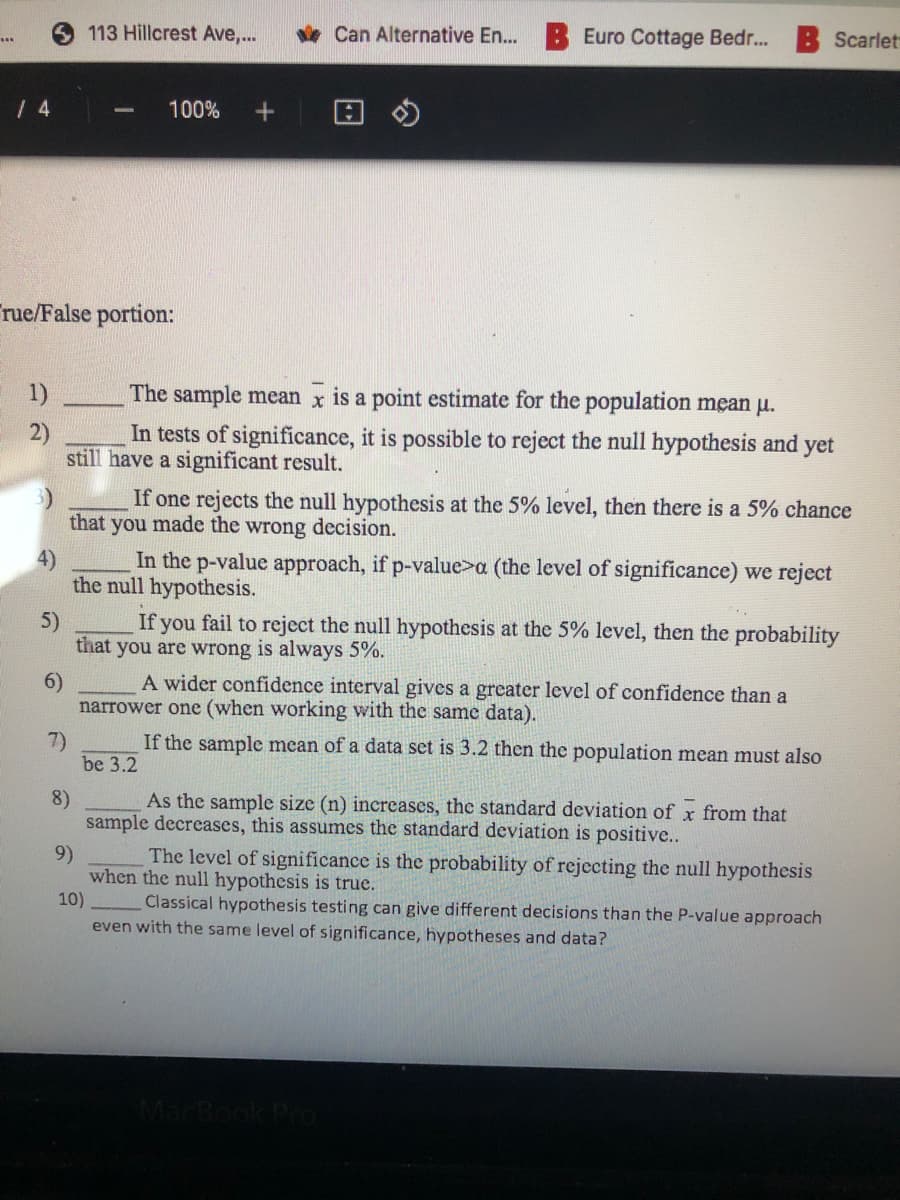As the sample size (n) increases, the standard deviation of x from that sample decreases, this assumes the standard deviation is positive...
As the sample size (n) increases, the standard deviation of x from that sample decreases, this assumes the standard deviation is positive...
Glencoe Algebra 1, Student Edition, 9780079039897, 0079039898, 2018
18th Edition
ISBN:9780079039897
Author:Carter
Publisher:Carter
Chapter4: Equations Of Linear Functions
Section: Chapter Questions
Problem 8SGR
Related questions
Concept explainers
Contingency Table
A contingency table can be defined as the visual representation of the relationship between two or more categorical variables that can be evaluated and registered. It is a categorical version of the scatterplot, which is used to investigate the linear relationship between two variables. A contingency table is indeed a type of frequency distribution table that displays two variables at the same time.
Binomial Distribution
Binomial is an algebraic expression of the sum or the difference of two terms. Before knowing about binomial distribution, we must know about the binomial theorem.
Topic Video
Question
8,9,10

Transcribed Image Text:113 Hillcrest Ave,...
e Can Alternative En...
Euro Cottage Bedr...
Scarlet
/ 4
100%
Frue/False portion:
1)
The sample mean x is a point estimate for the population mean µ.
2)
In tests of significance, it is possible to reject the null hypothesis and yet
still have a significant result.
If one rejects the null hypothesis at the 5% level, then there is a 5% chance
that you made the wrong decision.
4)
In the p-value approach, if p-value>a (the level of significance) we reject
the null hypothesis.
5)
If you fail to reject the null hypothesis at the 5% level, then the probability
that you are wrong is always 5%.
6)
A wider confidence interval gives a greater level of confidence than a
narrower one (when working with the same data).
7)
be 3.2
If the sample mean of a data set is 3.2 then the population mean must also
8)
As the sample size (n) increases, the standard deviation of x from that
sample decreases, this assumes the standard deviation is positive...
9)
when the null hypothesis is true.
10)
The level of significance is the probability of rejecting the null hypothesis
Classical hypothesis testing can give different decisions than the P-value approach
even with the same level of significance, hypotheses and data?
Expert Solution
This question has been solved!
Explore an expertly crafted, step-by-step solution for a thorough understanding of key concepts.
This is a popular solution!
Trending now
This is a popular solution!
Step by step
Solved in 2 steps

Knowledge Booster
Learn more about
Need a deep-dive on the concept behind this application? Look no further. Learn more about this topic, statistics and related others by exploring similar questions and additional content below.Recommended textbooks for you

Glencoe Algebra 1, Student Edition, 9780079039897…
Algebra
ISBN:
9780079039897
Author:
Carter
Publisher:
McGraw Hill

College Algebra (MindTap Course List)
Algebra
ISBN:
9781305652231
Author:
R. David Gustafson, Jeff Hughes
Publisher:
Cengage Learning

Glencoe Algebra 1, Student Edition, 9780079039897…
Algebra
ISBN:
9780079039897
Author:
Carter
Publisher:
McGraw Hill

College Algebra (MindTap Course List)
Algebra
ISBN:
9781305652231
Author:
R. David Gustafson, Jeff Hughes
Publisher:
Cengage Learning